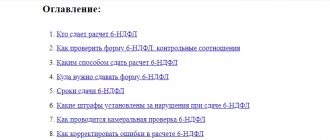Features of accounting in public catering
Almost every food service enterprise operates three business processes simultaneously.
- Production - preparing dishes from purchased products and their subsequent sale.
- Trade – sale of prepared meals, drinks and related products purchased from other organizations.
- Services – for example, organizing banquets.
All these types of activities are closely intertwined, which is reflected in accounting.
Meals for posting employees - meals for employees are provided for in the labor (collective) agreement
A different situation with taxation of the cost of free meals at an enterprise arises when the provision of meals to employees is regulated by a labor or collective agreement.
Income tax
The costs incurred by the enterprise for organizing meals for employees are not taken into account when calculating the taxable base for income tax, since lunches are provided free of charge (or at a reduced cost) and are not provided for the purpose of providing special meals to certain categories of employees (clause 25 of Article 270 of the Tax Code of the Russian Federation ).
Unified social tax
Payments to employees are not subject to UST if the taxpayer company does not have these payments as expenses taken into account when calculating income tax. Since free meals are not issued on the basis of an employment contract, the cost of meals cannot be subject to a single social tax. That is, insurance contributions to the Pension Fund should not be paid from the cost of food. However, according to Art. 255 of the Tax Code of the Russian Federation, the expenses of a taxpayer company may include any labor costs, including accruals in kind. Therefore, it is possible to reduce the size of the income tax base on the cost of food only if it is provided for by labor or collective agreements.
If a manufacturing company, or a firm provides services or performs paid work, the cost of food for tax purposes is taken into account separately for production personnel and administrative and management specialists. This is done because the provision of food is related to wages, and it can be attributed to direct or indirect expenses of the company.
The enterprise's expenses for remuneration of production personnel are direct expenses, part of which is not written off at the end of the period, but relates to work in progress. The costs of paying managers are indirect and are written off in full at the end of the tax period to form the income tax base.
Accounting for the receipt of products at the warehouse
When products arrive at the warehouse, the following must be considered:
- The same product can be considered both as a commodity and as a raw material for the manufacture of dishes.
For example, fruits can be sold individually or used to make salads. Or mineral water can be sold as a product (in bottles), or considered as a component for making cocktails. Therefore, the same product can be accounted for on account 10 “Raw materials” or account 41 “Goods”.
The offsetting account for the loan depends on how the products (goods) are purchased. If they are purchased from an organization or individual entrepreneur by bank transfer, then account 60 “Settlements with suppliers and contractors” is used.
But sometimes you urgently need to buy some component for a dish, and there is no time to wait for an order from a regular supplier to arrive. Then an employee of the company can purchase the necessary products, and in accounting this is reflected in account 71 “Settlements with accountable persons”.
DT 10 – KT 60 (71) – if the product will be used in the kitchen
DT 41 – KT 60 (71) – if it is resold unchanged
DT 19 – CT 60 – if the supplier and the company itself work with VAT
Since the product is actually the same, it is often used for purposes other than those for which it was originally intended.
For example, there were many orders for fruit salads and some of the apples that were intended for sale as goods were spent to prepare them.
Then the so-called “re-grading” occurs. This means that the total amount of valuables (apples in the example) corresponds to the accounting data, but the data for individual accounts diverges. Such deviations are identified based on the results of the inventory, after which it is necessary to make changes to the accounting.
Inventory in public catering should be carried out at least once a week. And many businessmen working in this area check the balances in the warehouse and kitchen every day.
- Products may come in different packaging.
It all depends on how the incoming product is accounted for. If it is a product, then each type of packaging must be taken into account separately, since this is a separate item in the price list, which will have its own markup.
If the product will be used for preparing dishes, then all receipts in different packaging must be “reduced to a common denominator.” As a result, one type of product will be taken into account as one item, in convenient units of measurement: liters, kilograms, etc.
Cash and money movement
And of course, restaurant accountants work with checks and track the movement of funds received into the restaurant account from bank cards. Here it is important to quickly compare written-off products with actually sold dishes. And make sure that all the money reaches the cash register.
To all this add the rest of the accounting and financial reporting processes of any enterprise. Automation systems for the restaurant business greatly facilitate the work of an accountant: from recording the receipt and consumption of raw materials to calculating salaries for the team.
How Jowi copes with the work of an assistant accountant, read in the second part of the article.
Calculation of food costs
The main documents that are used when calculating the cost of dishes are the technological map and the calculation card (form OP-1).
A technological map is essentially a recipe for preparing a dish. It contains a list of components in natural units per serving (or several servings). There is no established form for this document, so each catering enterprise develops its own forms.
The cost card calculates the cost of the dish in rubles. Form OP-1, along with other documents used in the accounting of public catering enterprises, was approved by Decree of the State Statistics Committee of the Russian Federation dated December 25, 1998 No. 132. Although the use of this document is not mandatory today, most businessmen prefer not to “reinvent the wheel”, but to use proven forms .
The production of many dishes consists of several stages. First you need to make a semi-finished product, and then use it in the production of the final product.
For example, if a recipe requires sauce, then you first need to draw up a separate flow chart for it and calculate the cost. Then the cost of the finished sauce should be included in the costing card of the “final” dish.
When preparing complex dishes, for ease of accounting, additional account 21 “Semi-finished products of own production” is usually used.
DT 10 – KT 60 (71) – purchase of “initial” products
DT 21 – KT 10 – transfer of products for processing
DT 20 – KT 10 (21) – products and semi-finished products used in the production of dishes
DT 90.2 – KT 20 – cost of sold dishes written off
Meals for posting employees - buffet lunches
When staff meals are organized in the form of a buffet, it is impossible to determine exactly how much food consumed per subordinate. In this regard, the costs incurred by the company for preparing lunches are subject to a single social tax and personal income tax according to a non-standard scheme for this situation.
As is known, UST and personal income tax are targeted taxes (contributions), since they are calculated separately based on the earnings of each of the company’s employees. A prepared meal at the expense of the organization is the employee’s income in kind, on which taxes must be paid, as on wages.
And when organizing lunches according to the buffet system, when everyone puts dishes in any quantity and assortment on their plate, it is impossible to determine with accuracy exactly how much each of the subordinates received this income (in other words, how much each employee had lunch for). ). For this reason, the amount of payment by the company for food provided to employees free of charge cannot be considered as staff income.
This rule is confirmed by judicial practice; it is enough to read paragraph 8 of the Information Letter of the Presidium of the Supreme Arbitration Court of the Russian Federation dated June 21, 1999 No. 42. A similar conclusion can be drawn after reading the text of the Federal Law dated December 15, 2001 No. 167-FZ and Chapters 23–24 of the Tax Code - in These regulations do not provide guidance on the procedure for determining an employee’s income in such a case.
Revenue accounting in public catering
Catering enterprises can generate revenue in different ways:
- From cash sales.
- Using bank cards of individuals.
- Using non-cash payments, for example, when organizing corporate events.
All these options should be reflected in accounting.
DT 50 – CT 90.1 – cash proceeds
DT 57 – CT 90.1 + DT 51 – CT 57 – money was received using an individual’s card using acquiring. An additional entry with account 57 “Transfers in transit” is necessary because banks usually do not immediately credit the funds debited from the card to the company’s account.
DT 62 - KT 90.1 + DT 51 - KT 62 - revenue from non-cash payments
Individual entrepreneur
Let's start with the individual entrepreneur. When choosing UTII or a patent, you must keep only tax records, namely the “Book of Income and Expenses of an Entrepreneur,” where you need to record only the amounts of income. But the tax authorities are not interested in your expenses under these regimes at all.
In these modes, income is taken into account using the cash method: everything that comes to the bank account from customers is considered income, with the exception of some cases - for example, when returning from an accountable person or from a supplier, when we paid a certain amount, and then the supplier returns to us money because he was unable to deliver; but these are no longer customers or guests, but other people with whom you collaborate.
As a result, the task of an entrepreneur or restaurateur is to keep only records of income, which is quite simple to do. You don't even need any specialized software, you just need to calculate the amounts from bank statements and cash registers.
Accounting for expenses in public catering
Direct expenses, that is, the cost of food produced or goods sold, are reflected in accounting using standard posting.
DT 90.2 - KT 20 (41)
All other expenses of catering enterprises are considered indirect. These are staff salaries, rent, various “incoming” services (for example, musical accompaniment), etc.
Accounting in public catering combines the features of both production and trade. Therefore, the distribution of overhead costs can be carried out in two ways:
- Using accounts 25 “General production expenses” and 26 “General expenses”.
DT 25 (26) – CT 70 (69,10,02,60...)
DT 20 – KT 25 – general production costs are written off in proportion to the selected base (for example, revenue or direct material costs)
DT 90.2 – KT 20 (26)
- With all overhead expenses reflected in account 44 “Sales expenses”.
DT 44 – CT 70 (69,10,02,60...)
DT 90.2 - KT 44
During the operation of catering enterprises, “extra” costs often arise: food spoilage, broken dishes, etc.
To account for them, you need to use account 94 “Shortages and losses from damage to valuables.”
DT 94 – KT 10 (41) – damage detected
DT 73 – CT 94 + DT 50 – CT 73 – expenses attributed to the guilty party
DT 91 - CT 94 - expenses written off if the perpetrators are not identified
Losses within the limits of natural loss reduce the tax base. For products, the specified standards are established by order of the Ministry of Industry and Trade of the Russian Federation dated March 1, 2013 No. 252. For losses of dishes and table linen, order of the USSR Ministry of Trade dated December 29, 1982 No. 276 is still in effect.
Conclusion
The basis of accounting in public catering is the calculation of the cost of food. It is important to correctly account for the products at the “input”, write them off in accordance with established standards and regularly monitor balances.
The distribution of overhead costs in public catering can be carried out according to the rules established for both production and trade.
How do accountants calculate the profitability of an establishment?
Option 1:
Divide the establishment’s net profit by the sum of all expenses and multiply by 100% (return on costs).
Option 2:
divide the amount of book profit by the value of assets and multiply by 100% (return on assets).
Entrust accounting in a restaurant, cafe or bar to Finguru! You will have at your disposal three accountants (salaries, primary and taxes) with experience in the catering industry and an understanding of all the important nuances.
Online accounting with a million ruble guarantee!
Key words for this article: accounting in restaurants, accounting in a restaurant, organizing accounting in a restaurant, accounting in a cafe, accounting in public catering, how to do accounting for public catering, how to do accounting for a cafe, inventory in a restaurant, inventory in a cafe, inventory in a bar
Product report
A document of the TORG-29 category is required to record the movement of products into the warehouse. It is filled out by the financially responsible warehouse employee, checked and certified by the accounting department. Each person has 1 copy of the document. Write down in the report form:
- numbers and dates of documents recording the acceptance and issue of goods, the total quantity and cost of the latter;
- in the receipt section, the balance of goods from the previous receipt is indicated, and then a new batch - all this is recorded in chronological order;
- in the consumption area, each line mentions the products issued.
Common mistakes
Error:
The accountant does not withhold personal income tax from the cost of food provided to the employee at the enterprise free of charge, at the expense of the employer.
A comment:
Free food is an employee's income in kind, related to wages. And personal income tax is withheld from wages and other payments related to wages.
Error:
A company that provides buffet meals for employees takes into account the cost of meals as part of the employee's remuneration.
A comment:
In the event that meals are organized according to a buffet system, it is impossible to determine how much lunch a particular employee spent. Accordingly, the cost of food cannot be taken into account as part of remuneration in kind.
Act on the sale and release of kitchen products
The OP-10 form is compiled daily. Opposite each dish name is the number of units sold and their total price. In column 14 the total amount of products sold is entered, and in column 16 - its cost, after which it is written off from financially responsible employees. If there were a la carte dishes, they are entered in a separate column. After completion, the act is given to an accountant for verification.
Important! Form OP-10 is not independent, but serves as an annex to OP-14







